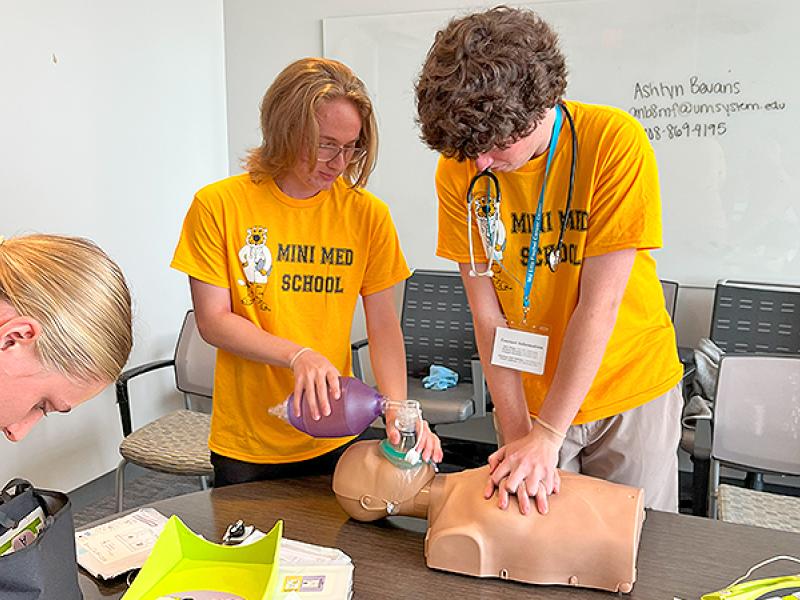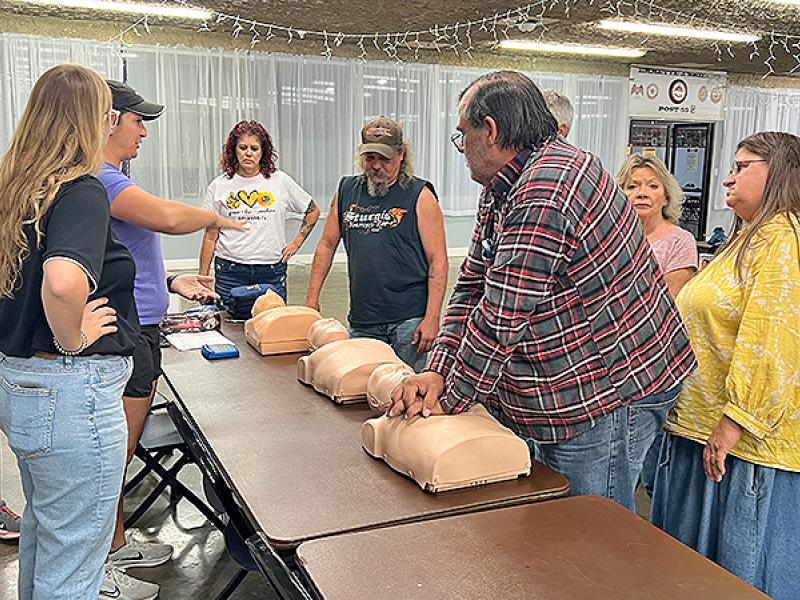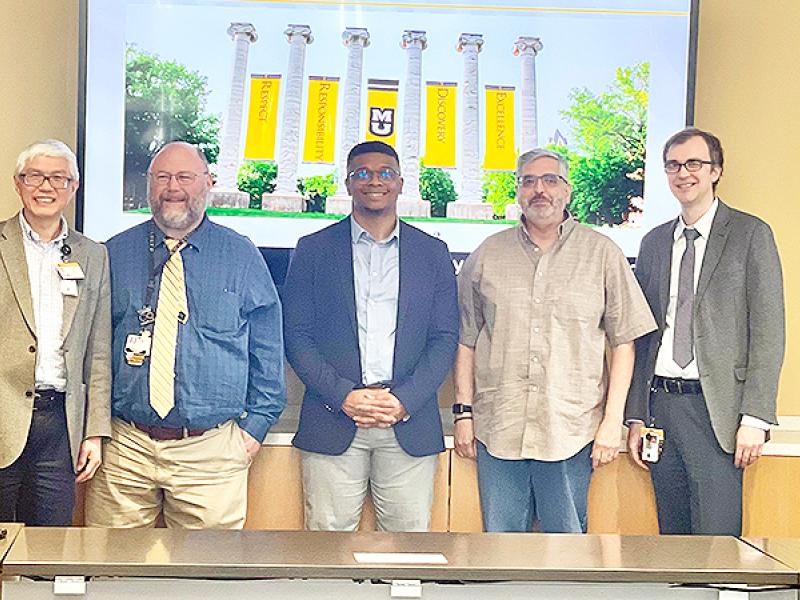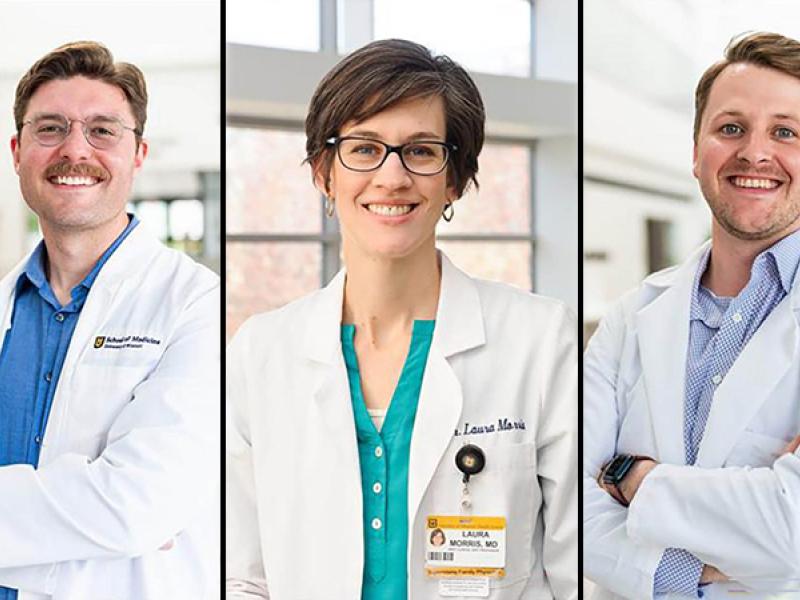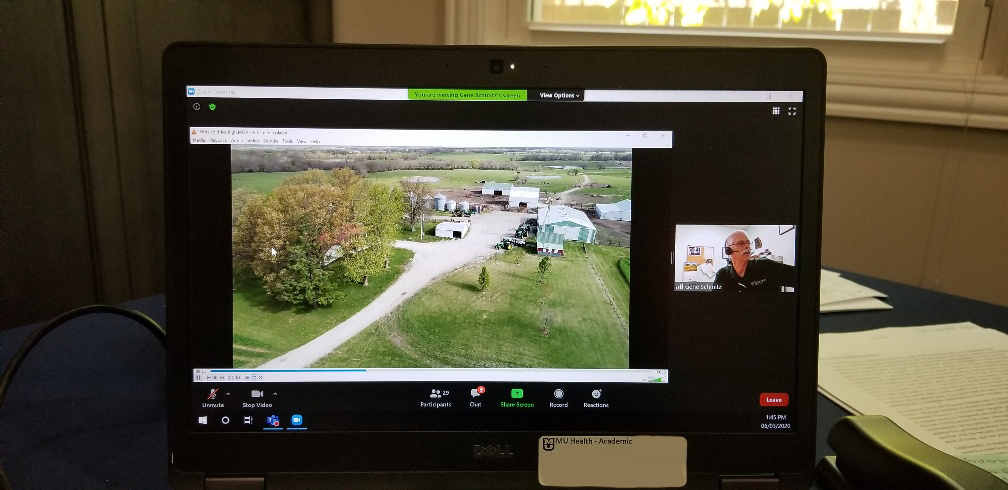
The first annual Clinical Rural Immersion Program gave 25 health care students real-world experience in rural Missouri. This year, students spent two weeks studying rural medicine in Sedalia. To protect students and the Sedalia community against the potential spread of COVID-19, the program was held virtually with modified in-person visits.
“I’m from an itty-bitty town called Millersville,” said Jessica Lier, who recently completed her first year at MU School of Medicine. “I have two little brothers that have special needs, and we had to travel often for them to see specialists. I recognized pretty early on that even in semi-rural areas there is a lack of medical resources that people need. I want to be able to help people like my little brothers and maybe practice in those areas.”
The project was made possible by the Health Resources and Services Administration (HRSA) funding the MU School of Medicine’s rural medicine programs received last September. This program is one of many ways that the MU School of Medicine is exposing future health care leaders such as Lier to learn about rural medicine in the hope of combatting Missouri’s ongoing rural doctor shortage.
“There are several programs in our pipeline that give students an opportunity to experience rural communities and potentially practice in these areas in the future,” said Victoria McGhee, program and project coordinator for MU’s Rural Scholars Program. “The research shows that the more exposure medical students have with a rural practice, the more likely they are to return to a rural practice.”
From June 1-12, the students learned through live online sessions, assigned readings, pre- and post-work activities, reflection assignments and other group work. Pharmacy students were able to complete their clinical rotations on-site in Sedalia. The curriculum was adjusted for the other students with limited on-site interaction through an online learning platform. To meet their clinical requirements, students participated in telehealth visits with health care professionals based in Sedalia to expand their understanding of the community.
“The community benefits through sharing the unique aspects of their region to recruit professionals,” said Kathleen Quinn, PhD, former associate dean for rural health. “This program is an academic and community partnership at its best. The students also benefit from experiencing interprofessional team care through an understanding of each discipline’s unique role contributing to patient centered care.”
Students got to know Sedalia by doing virtual farm tours via guided drone footage and completing a windshield survey by driving through the area and taking notes about population demographics and the availability of public services and health care.
“Each rural community is so different,” McGhee said. “In this case, we want students to understand what makes Sedalia different and why that community runs the way that it does. As a rural provider, you’re more than just a doctor. You are part of the community.”
The Clinical Rural Immersion Project is being planned to take place in West Plains in 2021.


